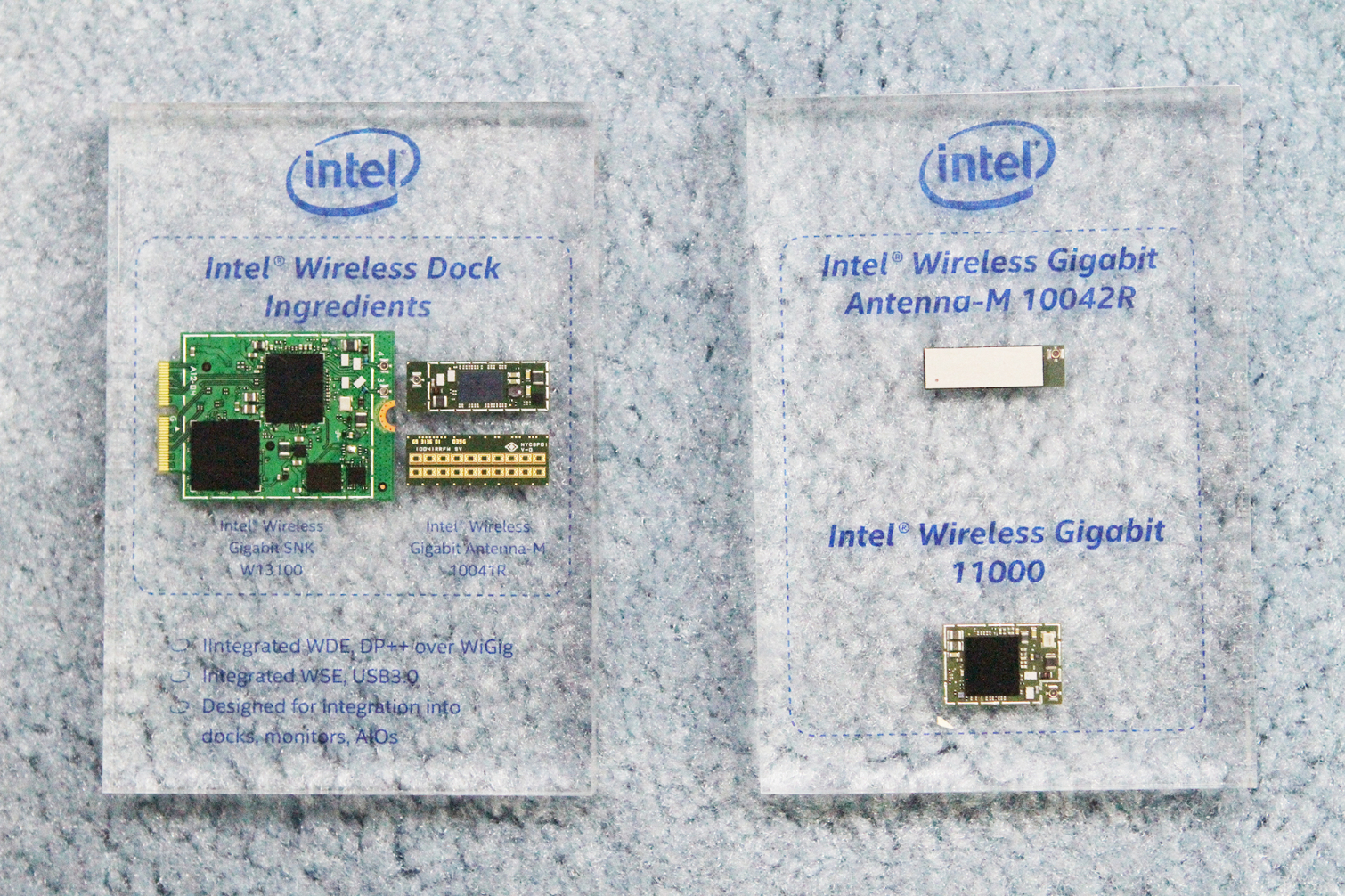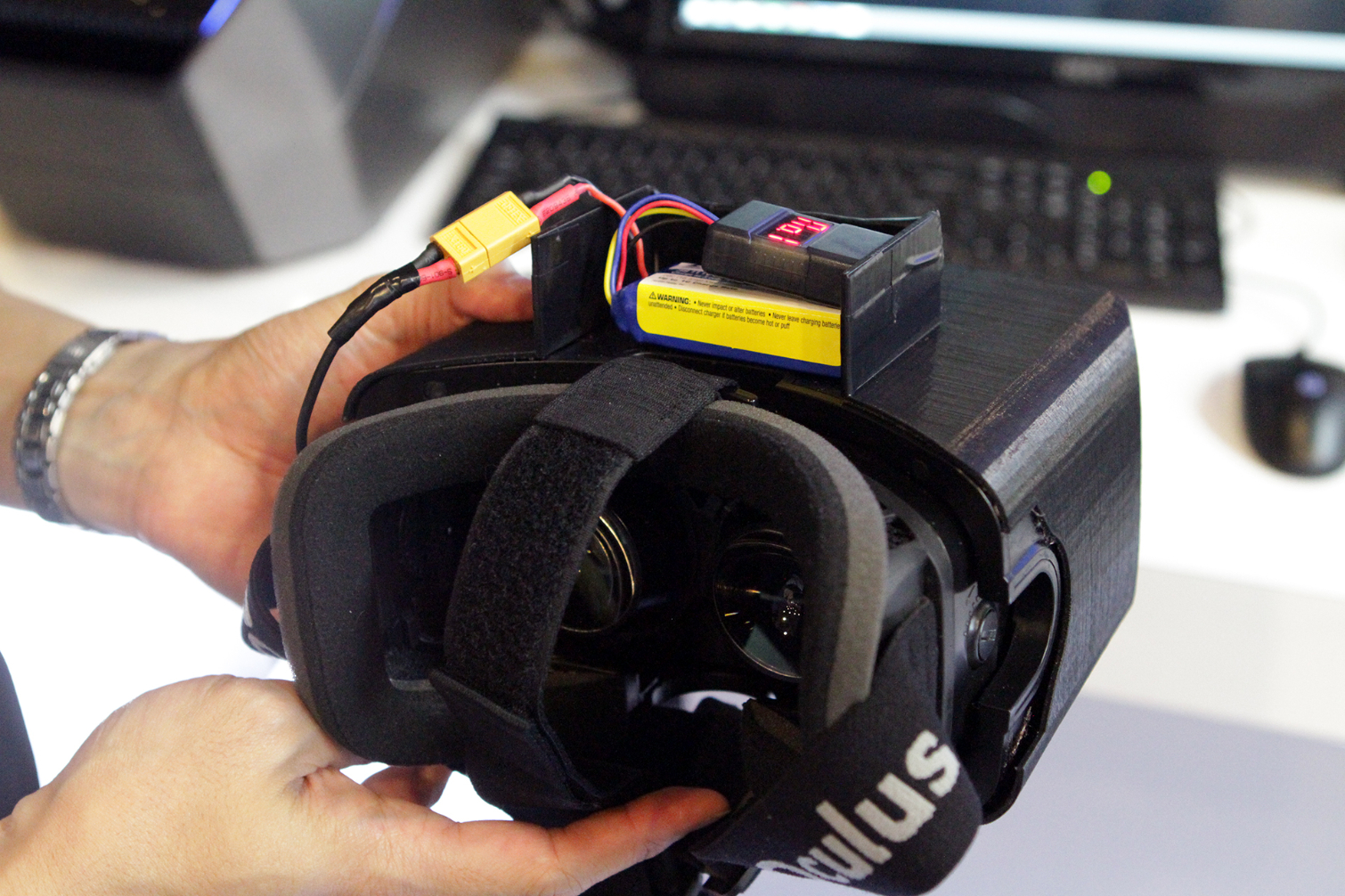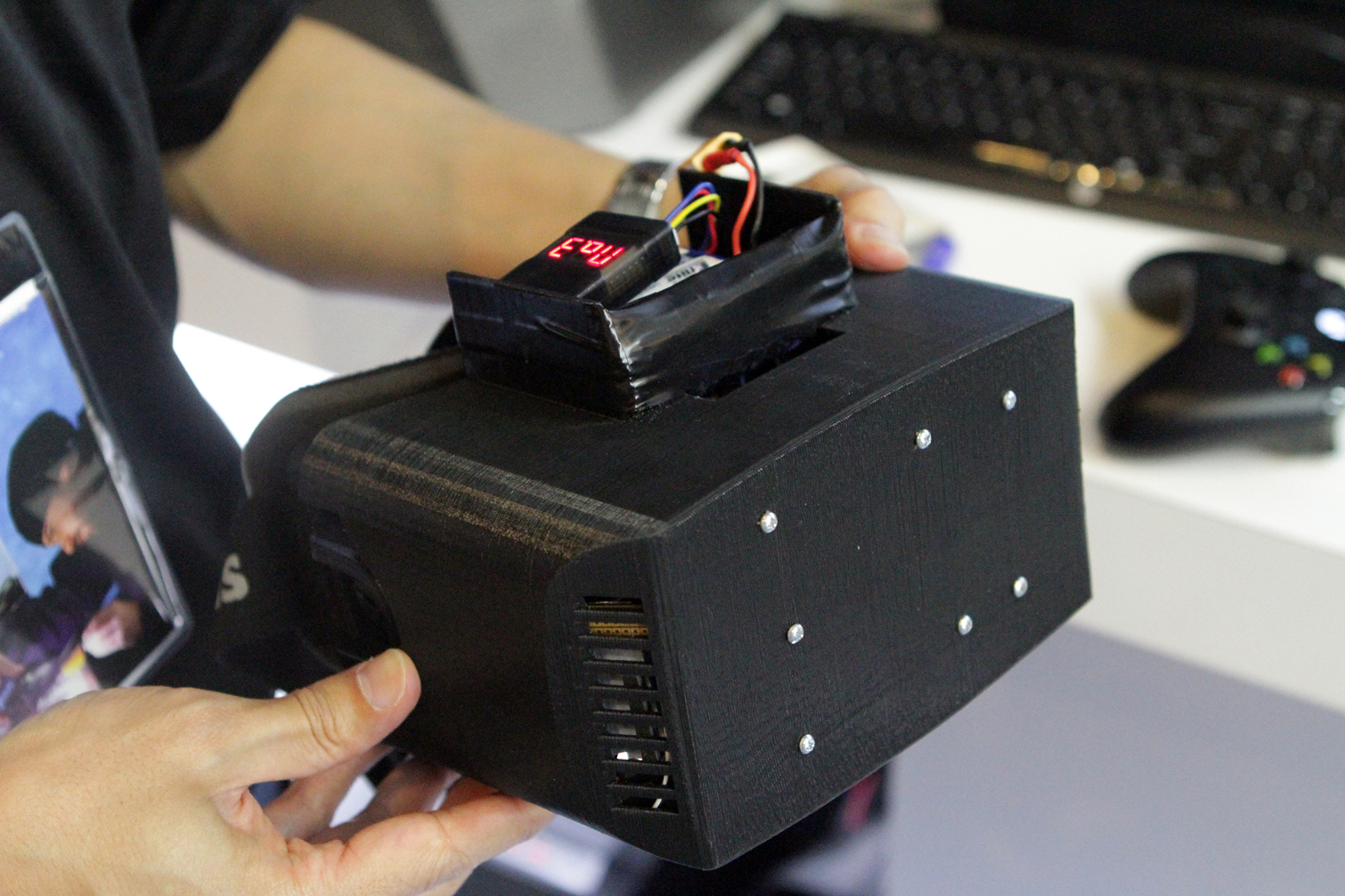Intel Hates Cables, VR Edition: A Wireless VR Demo
Back at IDF 2014, one of the big themes was killing cables. Between Rezence wireless charging, WiDi and WiGig, we were supposed to be wire-free by now (oh well), and Intel’s professed disdain for cables appears to extend to VR HMDs.
In addition to the self-contained and therefore intrinsically wireless Project Alloy VR HMD, a group within Intel mocked up a Rift DK2 that used WiGig to stream the video content from a PC to the HMD with no cables. Like the VR vest we tried out, this is intended as a proof of concept.
Long story short, it worked, with caveats.
The Kludge
To be clear, this demo was rather unpolished, and as such, the headset was somewhat kludged together. Intel took an Oculus Rift DK2 and added a WiGig adapter--an existing Intel Wireless Gigabit Sink W13100 “dock on a module” from which the company removed components and tweaked others. The group also employed an Intel Wireless Gigabit Antenna-M10041R. Other potential components for future iterations include the Wireless Gigabit Antenna-M 10042R and the Wireless Gigabit 11000.
Note that among the W13100’s features, it “allows wire-equivalent for up to two full HD displays.” The “two displays” part is perfect for VR, and the “full HD” part is more than sufficient for today’s high-end HMDs.
The team also installed a small battery to power both the HMD’s display and the WiGig module; the Li-ion battery, I was told, could hold out for about an hour.
The kit looked like this:
Get Tom's Hardware's best news and in-depth reviews, straight to your inbox.
And if it looks ungainly to wear, that’s because it was. However, an Intel rep told me that future iterations of an add-on module would be more svelte, and WiGig could even be integrated into the Rift or Vive.
Currently, WiGig introduces an additional 14ms of lag, but Intel is working to push that to below 10ms. WiGig can operate at 60 GHz, and it requires the host PC to have a companion WiGig module installed.
The Game
To show what a WiGig’d HMD could do, the fellows at the booth had me don the (seriously, so ungainly) DK2 and play through a few minutes of Lucky’s Tale. The rep warned me that the current mockup occluded some of the HMD’s sensors, so the tracking would be off. (In the same breath, he assured me that this is an issue they could easily avoid in future prototypes.)
The tracking wasn’t ideal, but it actually didn’t bother me much in the few minutes I played the game. Further, although the camera position would shift as I moved Lucky around his adorable little world, I did not experience any dizziness or nausea, which tells me that the framerate was adequate. (For context: I’ve rarely been ill within VR environments, so I suppose I have a relatively high tolerance.)
Verdict: Feasible.
The Future
Alert readers will note something curious about this particular wireless approach, which is that Intel just announced a “wireless” VR HMD in Project Alloy. However, the latter’s “wireless” capability has nothing to do with wireless transmission of data; it’s because Alloy is a self-contained HMD, with a PC crammed inside of it.
There are two reasons this WiGig idea exists. One would be as a way to introduce untethered VR to other HMDs (Rift, Vive, etc.). In that use case, Intel would be selling WiGig modules.
A second possibility is that Intel could use a WiGig connection to augment Project Alloy. Remember, although Alloy has a Skylake chip in it, there is no discrete GPU, which means that it would definitely fail the VR-ready test. The ideas is that you could run a VR experience on a standalone VR-ready PC and use WiGig to pipe the content to the Alloy HMD. (In a VR session at IDF, Intel also discussed USB Type C and Thunderbolt 3, along with WiGig, as possible connectivity options; the former wired options would still reduce cable clutter from the mess we have today.)
However, that is mostly speculation. Intel hasn’t been clear about how it might employ WiGig. We just know that there’s a group within Intel trying to make it work. To hear them tell it, they’re getting close. A slide at the demo station read:
Intel is exploring enabling the untethering of Virtual Reality Head Mounted Displays. We are at advanced stages of confirming our existing WiGig products can support the demanding needs of the VR usage, mainly the high frame rate and very low delay with concurrent support of peripherals.
If and when it creates a more polished WiGig-for-VR setup, Intel will have more skin in the VR game--which is to say, more VR-related IP to sell or license.
Seth Colaner previously served as News Director at Tom's Hardware. He covered technology news, focusing on keyboards, virtual reality, and wearables.
-
kinney I like the VR vest a lot better than this. Getting down from 14ms is going to be a significant task and will be tough to match a wire. I'm holding off on major system updates other than my Skull Canyon NUC till some of this pans out. I'm assuming Intel or someone will eventually sell complete systems in a vest/backpack that are also a desktop PC.Reply -
bit_user ReplyCurrently, WiGig introduces an additional 14ms of lag, but Intel is working to push that to below 10ms.
Ugh. Forget it.
Why does it add ~1 frame of latency? Is that due to compression? Whatever, the reason, they should drop it and focus on a transport which adds no more than a few scanlines worth of latency.
-
Sakkura The total latency budget for VR is like, less than 20ms. Taking out 14ms or even 10ms for wireless transmission is just not viable.Reply



